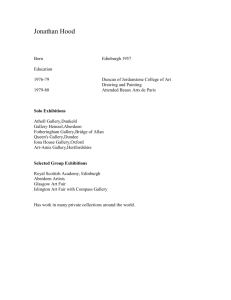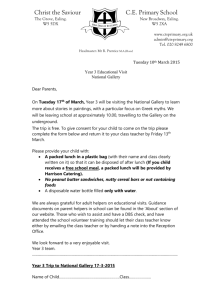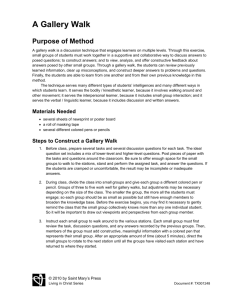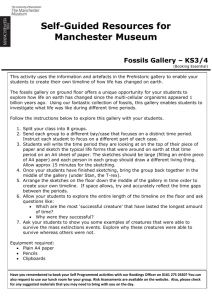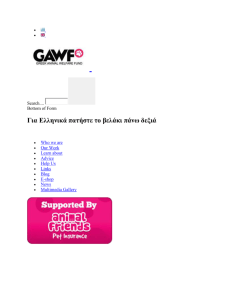Gallery Walk: A Useful Classroom Practice
advertisement
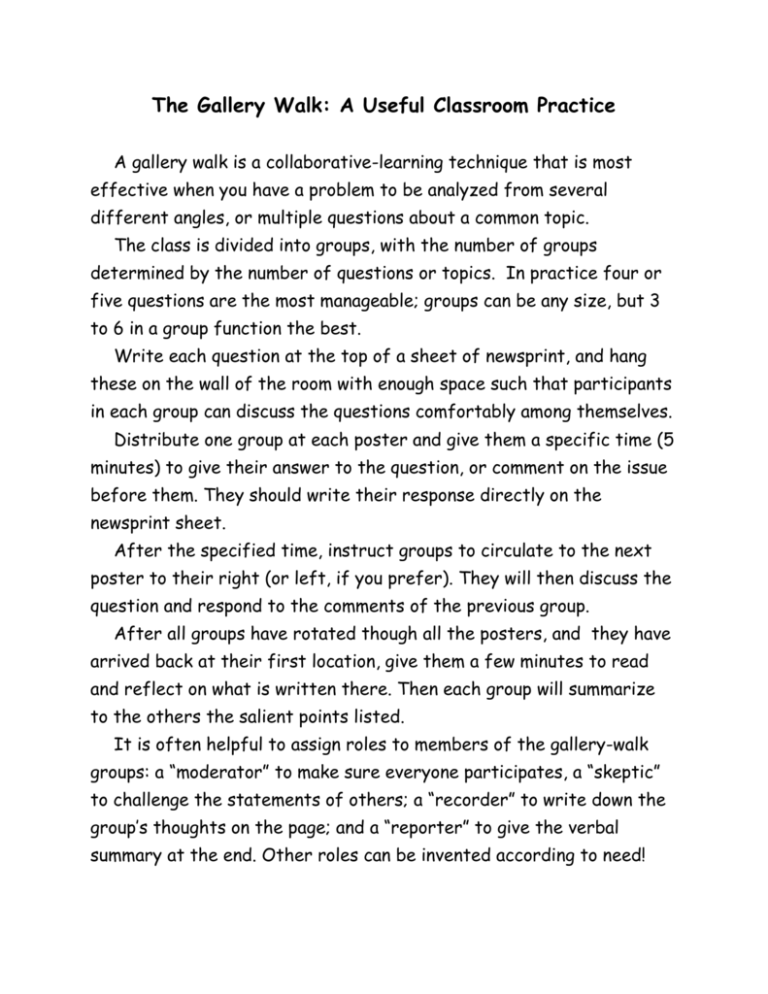
The Gallery Walk: A Useful Classroom Practice A gallery walk is a collaborative-learning technique that is most effective when you have a problem to be analyzed from several different angles, or multiple questions about a common topic. The class is divided into groups, with the number of groups determined by the number of questions or topics. In practice four or five questions are the most manageable; groups can be any size, but 3 to 6 in a group function the best. Write each question at the top of a sheet of newsprint, and hang these on the wall of the room with enough space such that participants in each group can discuss the questions comfortably among themselves. Distribute one group at each poster and give them a specific time (5 minutes) to give their answer to the question, or comment on the issue before them. They should write their response directly on the newsprint sheet. After the specified time, instruct groups to circulate to the next poster to their right (or left, if you prefer). They will then discuss the question and respond to the comments of the previous group. After all groups have rotated though all the posters, and they have arrived back at their first location, give them a few minutes to read and reflect on what is written there. Then each group will summarize to the others the salient points listed. It is often helpful to assign roles to members of the gallery-walk groups: a “moderator” to make sure everyone participates, a “skeptic” to challenge the statements of others; a “recorder” to write down the group’s thoughts on the page; and a “reporter” to give the verbal summary at the end. Other roles can be invented according to need! Applications of the Gallery Walk 1. Breaks the ice and introduces students who might otherwise never interact. 2. Begins the community-building process so central to cooperative learning and emphasizes the collaborative, constructed nature of knowledge. 3. Suggests to students their centrality in the course, and that their voices, ideas, and experiences are significant and valued. 4. Allows for both consensus and debate—two skills essential to knowledge-building—and facilitates discussion when the class reconvenes as a larger group. 5. Enables physical movement around the room, an important metaphor for the activity at the course’s core. 6. With appropriate questions, can provide one way for the instructor to gauge prior knowledge and skills, and identify potentially significant gaps in these. 7. With appropriate questions, provides a way to immediately introduce students to a central concept, issue, or debate in the field. 8. Through reporting back, provides some measure of closure by which students can assess their own understanding. Using the gallery walk in an academic setting: Examples Gallery walks tend to work best when the questions or ideas are fairly complicated or even a bit controversial, and the answers will be better when processed by a large number of students. In a general geochemistry class, we used the following questions to explore the principles of nucleosynthesis: 1. Why is the sun thought to be a “second-generation” star? 2. Why are the even-numbered nuclides in the solar system more abundant than the odd-numbered nuclides? 3. Why is lead so abundant in the solar system? 4. How do the elements Li, Be, and B form? The gallery walk can also serve as a way to explore student knowledge of a topic that is outside of the central theme of the course, but is helpful for a discussion of processes or related concepts. In a course where we were discussing organic contamination of groundwater, we used the gallery walk to establish the class’ knowledge base about organic compounds: What do the following mean to you? 1. Aliphatic hydrocarbons; ketones 2. Aromatic hydrocarbons; esters 3. Heterocyclic; phenols 4. Humic and fulvic acids





